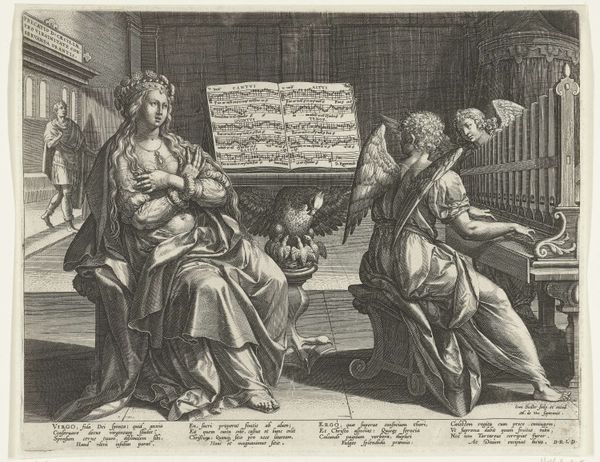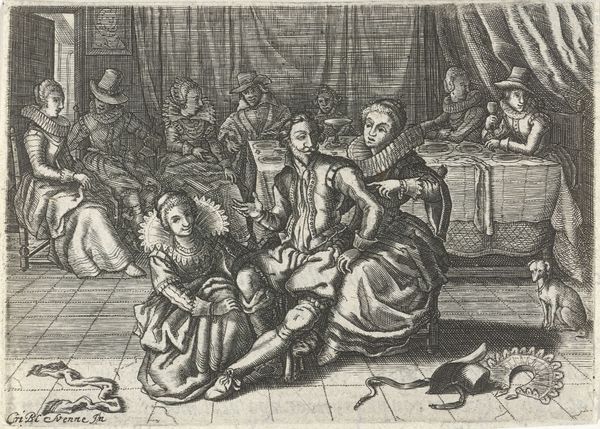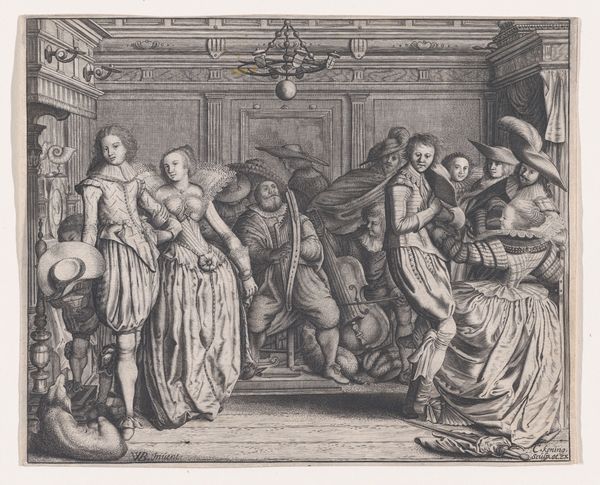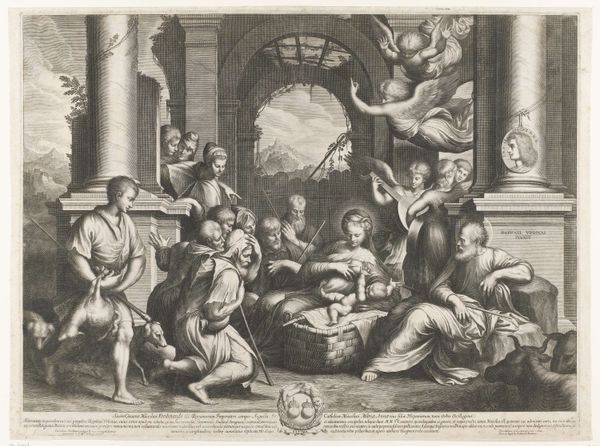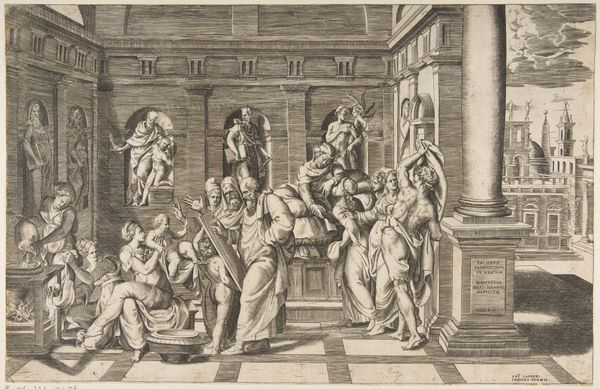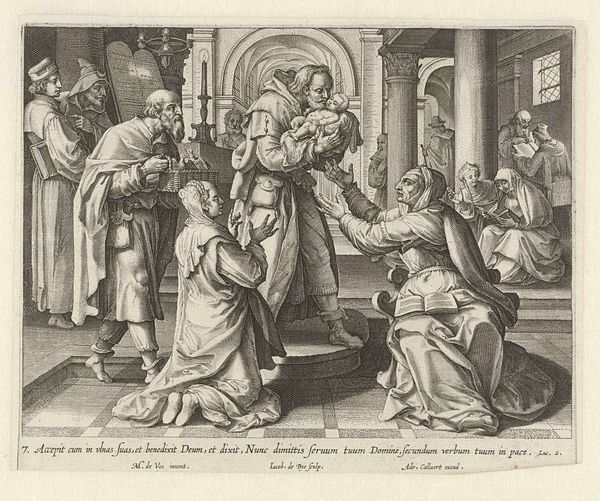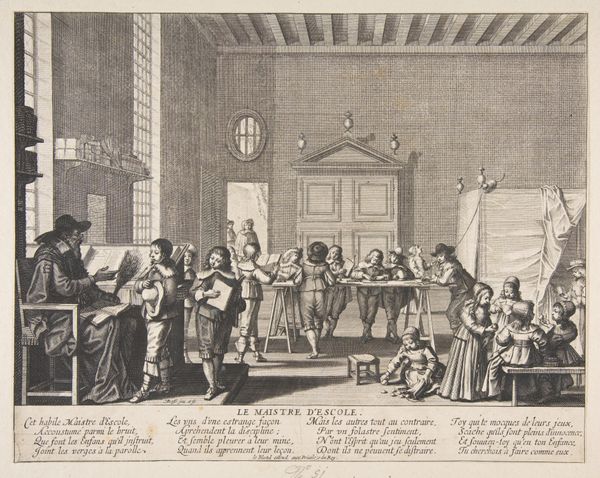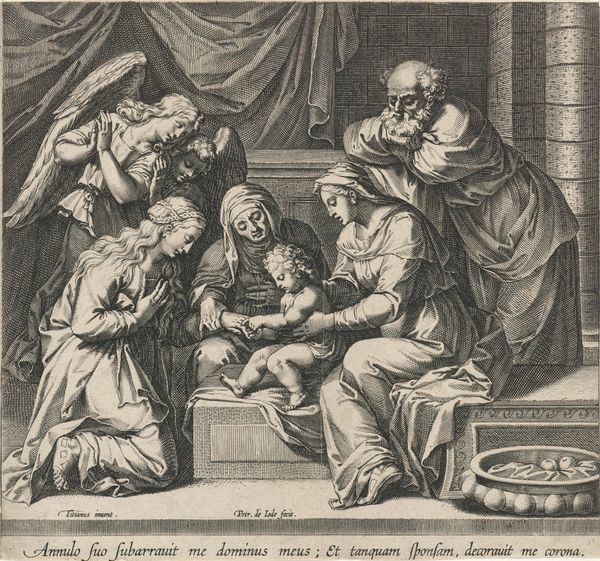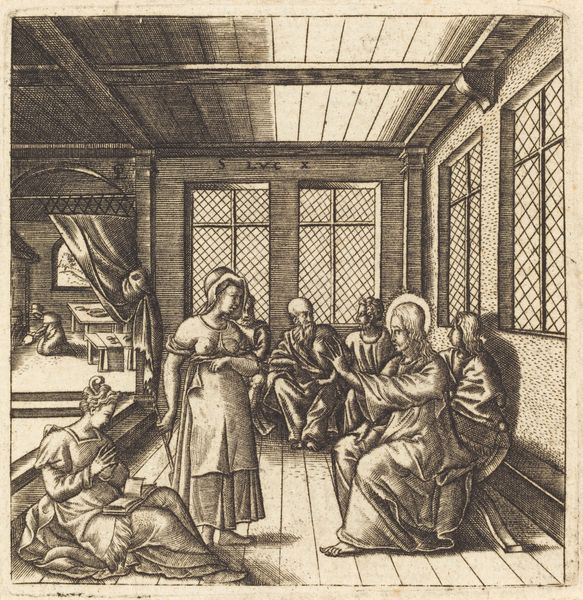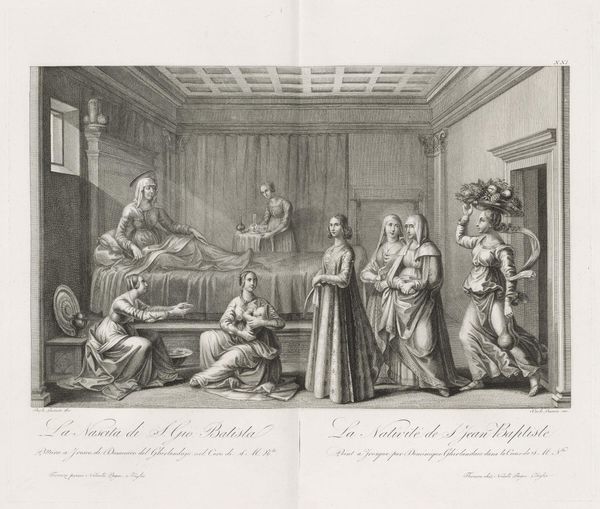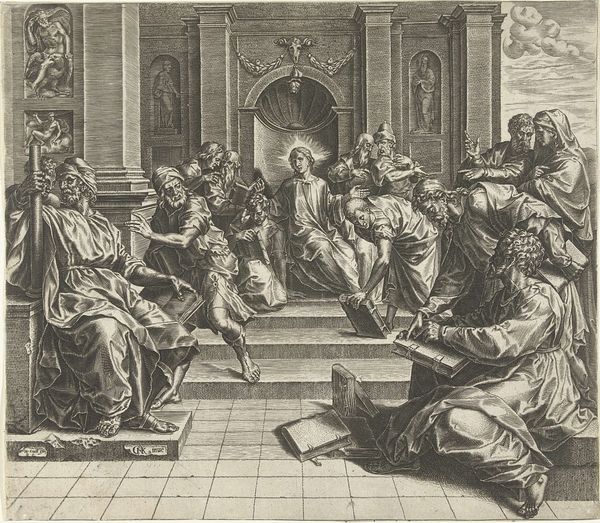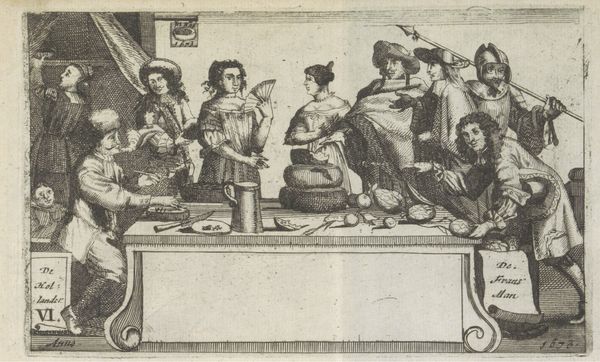
painting, oil-paint
#
baroque
#
dutch-golden-age
#
painting
#
oil-paint
#
historical fashion
#
group-portraits
#
genre-painting
Copyright: Public domain
Curator: Immediately, there's a sense of studied nonchalance; the figures seem almost too deliberately posed for a casual gathering. Editor: This painting is called "The Music Party." While its precise date remains unknown, we attribute it to Willem Cornelisz Duyster, a prominent figure in the Dutch Golden Age. Duyster worked primarily with oil paint, and you can appreciate that handling in the details, especially in the fabrics. Curator: Yes, the oil allows for remarkable textural accuracy – the stiff ruffs, the satins, and even the rendering of light on the silver wine cooler in the foreground all draw my eye across the plane. What about the arrangement? To me, the strong diagonals suggest both movement and containment; observe the receding checkerboard floor and how the figures are compressed toward the left, yet their gazes radiate outward. Editor: That wine cooler you noted seems more significant on second glance. Objects like that really point to the wealth of Dutch society at the time. The composition gives us a window into the rituals and performances of the Dutch elite. Music served as a social currency and symbolized harmony, not just in the musical sense, but in social terms too. It reflects on cultural refinements and economic privilege. Curator: Certainly. There's a dialogue in the visual relationships, almost call-and-response. The lute player offers the music, a kind of language; another figure looks like she might sing; there’s the one reading from her little booklet. It all reinforces an enclosed system of communication. I might argue this is a discourse on art's role itself as the communicative object. Editor: These "genre paintings," as they are often categorized, provide fertile ground for contemplating daily life. "The Music Party," like other Dutch Golden Age artworks, reveals aspects of identity construction. Think about how the clothing styles in these portraits serve as potent indicators of status and affiliation. Curator: We’ve observed how Duyster constructs meaning through form and surface—an interplay of compositional balance and semiotic richness that prompts continual visual exploration. Editor: Exactly, and considering "The Music Party" through the lens of cultural history helps us decode its rich symbolic language. By considering Dutch values, the painting unveils nuanced social attitudes of that era.
Comments
No comments
Be the first to comment and join the conversation on the ultimate creative platform.

